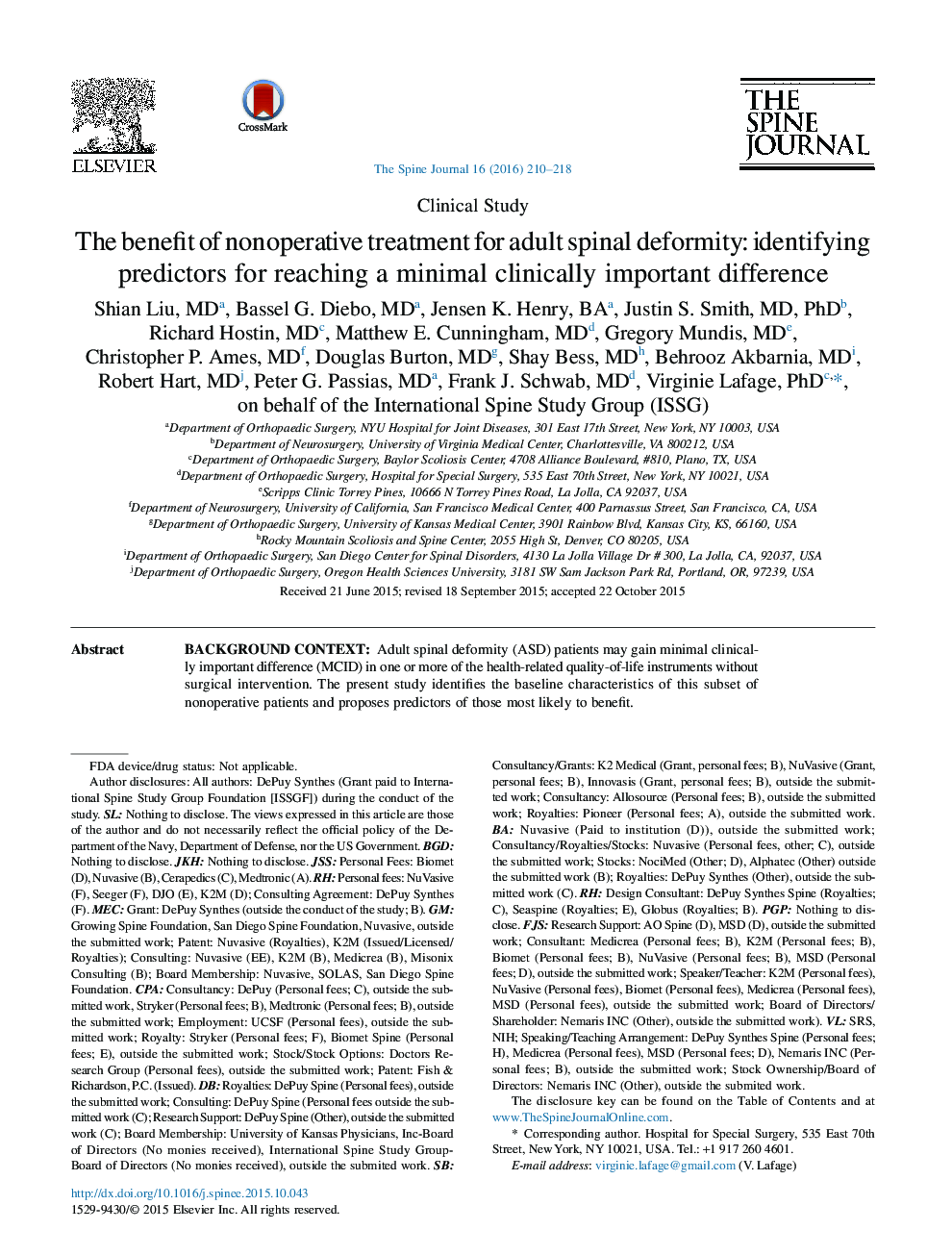| کد مقاله | کد نشریه | سال انتشار | مقاله انگلیسی | نسخه تمام متن |
|---|---|---|---|---|
| 6211617 | 1268554 | 2016 | 9 صفحه PDF | دانلود رایگان |
Background ContextAdult spinal deformity (ASD) patients may gain minimal clinically important difference (MCID) in one or more of the health-related quality-of-life instruments without surgical intervention. The present study identifies the baseline characteristics of this subset of nonoperative patients and proposes predictors of those most likely to benefit.PurposeThe study aims to determine the factors that affect likelihood of nonoperative patients to reach MCID.Study Design/SettingThis is a retrospective review of a prospective, multicenter database.Patient SampleThe study includes nonoperative ASD patients.Outcome MeasuresHealth-related quality-of-life measures, including the Scoliosis Research Society (SRS)-22 questionnaire, were used.MethodsThe study used a multicenter database of 215 nonoperative patients with ASD and with minimum 2-year follow-up. Using a multivariate analysis, two groups were compared to identify possible predictors: those who reached MCID in the SRS pain or activity (N=86) at 2 years and those who did not reach MCID (N=129). A subgroup multivariate analysis of patients with a deficit (potential improvement) in both SRS pain and activity (N=84) was performed. Data collection was supported by a grant from DePuy for the International Spine Study Group Foundation.ResultsAt baseline, the nonoperative patients who reached MCID had a significantly lower SRS pain score (3.0 vs. 3.6), smaller thoracolumbar Cobb (TL Cobb) angle (29.6° vs. 36.5°; 87 patients with SRS-Schwab classification of lumbar or double), lower sacral slope (33.1° vs. 36.4°), and less lumbar lordosis (46.5° vs. 52.8°) (all p<.05). The SRS pain and TL Cobb were significant predictors for reaching MCID. The pelvic incidence minus lumbar lordosis (PIâLL) was significant on univariate analysis but not on multivariate analysis (7.5° vs. 2.6°; p=.14). In the subset of severely disabled patients, worse vertebral obliquity was a predictor for not achieving MCID (p<.05).ConclusionsNonoperative ASD patients who achieved MCID in SRS activity or pain had a lower baseline SRS pain score and less coronal deformity in the TL region. Greater baseline pain offers significant room for potential improvement, which may be important in identifying ASD patients who have the potential to reach MCID nonoperatively. Coronal deformities in the TL region and associated vertebral obliquity may negatively impact potential for improvement in nonoperative care.
Journal: The Spine Journal - Volume 16, Issue 2, February 2016, Pages 210-218
